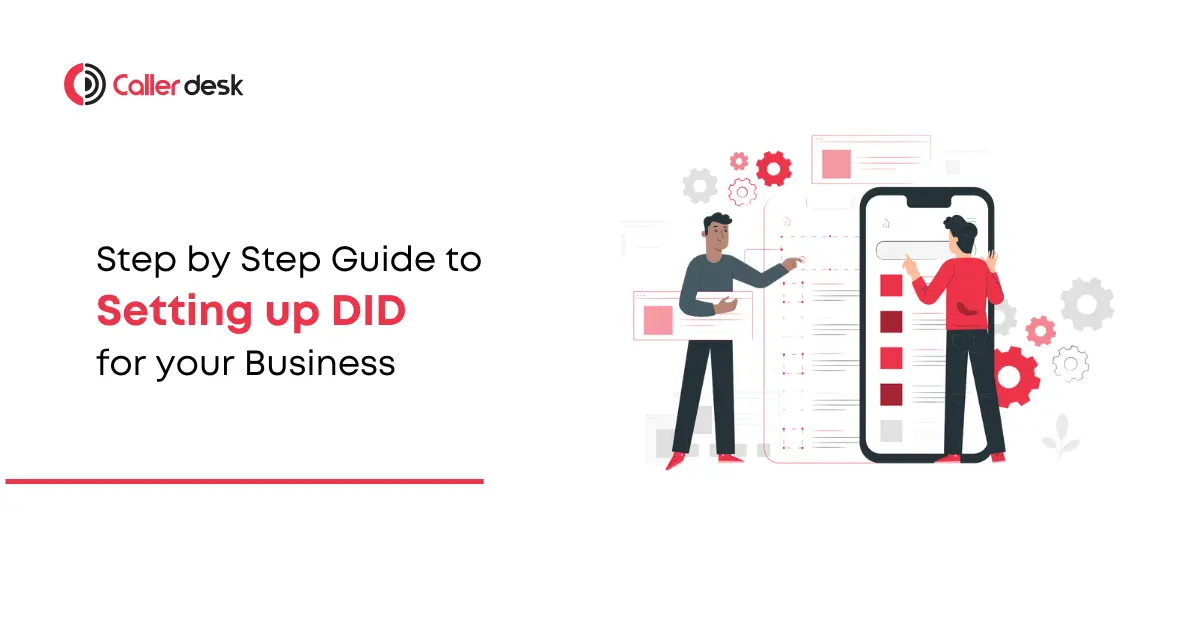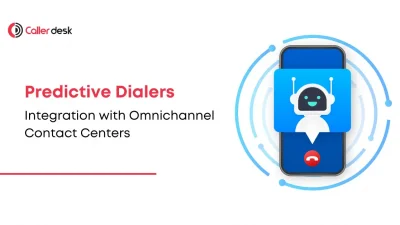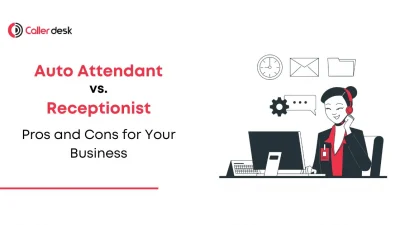Imagine running a business where every customer call reaches the right person instantly—no long waits, no annoying transfers. A sales inquiry goes straight to the sales team, a billing question lands in the finance department, and a VIP customer connects directly with their account manager.
This is the power of Direct Inward Dialing (DID) . By assigning unique phone numbers to departments or employees, DID streamlines communication, enhances customer satisfaction, and projects a professional image.
Let’s dive into a detailed, step-by-step guide to setting up DID for your business. Along the way, we’ll share examples to help you visualize how each step works in real-life scenarios.
What is Direct Inward Dialing (DID)?
Direct Inward Dialing (DID) is a phone system feature that allows businesses to assign unique numbers to employees or departments. This means customers can call these numbers directly without going through a central receptionist or operator.
Example:
You run an IT services company. Instead of all calls going to a general line, where a receptionist manually transfers them:
- Sales calls are routed to a specific DID number for your sales team.
- Technical support inquiries go to the support team through another DID number.
- Billing queries reach the finance department directly.
This setup saves time, reduces customer frustration, and ensures calls are handled by the right team.
Step-by-Step Guide to Setting Up Direct Inward Dialing (DID)
Step 1: Choose a Reliable DID Provider
Selecting a trusted cloud telephony provider is the foundation of your DID setup.
What to Look For:
- Number Allocation: Ensure the provider can assign multiple DID numbers for departments and employees.
- Scalability: The provider should support your growth, allowing you to add more numbers or features easily.
- Call Routing Options: Look for flexibility to customize how calls are routed based on your organizational structure.
- Integration: The solution should work with your existing CRM, helpdesk, or analytics tools.
Example:
Imagine a mid-sized law firm that partners with a provider like Callerdesk. They set up DIDs for individual lawyers, allowing clients to contact their legal representative directly. As the firm expands, the provider adds new numbers for the growing team, maintaining seamless communication.
Step 2: Select Your DID Numbers
Choosing the right numbers ensures accessibility and professionalism.
Options to Consider:
- Department-Specific Numbers: Allocate dedicated numbers for departments like sales, support, and HR.
- Employee-Specific Numbers: Assign unique numbers to key personnel, such as account managers or team leads.
- Local vs. Toll-Free Numbers:
- Local Numbers: Build trust with customers in specific regions.
- Toll-Free Numbers: Provide cost-free access to customers across the country.
Example:
A healthcare clinic assigns DIDs to its departments:
- 1-800-CLINIC-SALES: For patients scheduling appointments.
- 1-800-CLINIC-SUPPORT: For inquiries about prescriptions or test results.
- 1-800-CLINIC-BILLING: For billing questions.
Patients feel confident knowing they’re dialing directly to the relevant team without delays.
Step 3: Configure Call Routing
Call routing ensures incoming calls are directed correctly based on the dialed DID number.
Routing Strategies:
- Department Routing: Calls go to specific departments based on the DID number.
- Agent Routing: Personalize the experience by connecting calls to specific agents.
- Backup Routing: Avoid missed calls by redirecting unanswered calls to voicemail, another agent, or an after-hours team.
Example:
An online retailer sets up routing as follows:
- Calls to the sales DID go to the sales queue, with backup routing to an overflow team if the queue is full.
- Calls to the support DID are routed to Tier 1 agents. If unresolved, they’re escalated to Tier 2 support.
This setup ensures no call goes unanswered, improving customer satisfaction.
Step 4: Enhance with IVR Integration
Interactive Voice Response (IVR) systems work alongside DID to guide callers to the right destination.
IVR Features:
- Automated Greetings: Provide a professional welcome message.
- Menu Options: Offer choices like “Press 1 for Sales” or “Press 2 for Support.”
- Self-Service Features: Enable callers to resolve common queries, such as checking order status or office hours.
Example:
A bank integrates IVR with DID to offer:
- Balance inquiries via IVR without human assistance.
- Loan applications routed directly to the loan department.
- Escalation to a live agent for complex issues.
This reduces agent workload while improving the caller experience.
Step 5: Test the System
Testing ensures your DID setup works perfectly before going live.
Testing Checklist:
- Simulate Calls: Verify that each DID number connects to the correct department or individual.
- Check IVR Functionality: Ensure menu options work as intended.
- Monitor Call Quality: Verify audio clarity and stable connections.
Example:
A SaaS company simulates customer calls to their support team’s DID. They test various scenarios, like calls during peak hours or after-hours, to ensure backup routing and voicemail features work seamlessly.
Step 6: Train Your Team
Even the best technology fails without proper training. Ensure your employees understand how to use the DID system effectively.
Training Essentials:
- Teach employees how calls are routed to their extensions.
- Train them to handle calls professionally and efficiently.
- Familiarize them with tools like call-forwarding and IVR prompts.
Example:
A real estate agency conducts team training sessions where agents learn to handle direct calls professionally, improving response times and customer interactions.
Conclusion
Setting up Direct Inward Dialing is a smart, cost-effective way to elevate your business’s communication. From direct routing and professional branding to improved customer satisfaction, DID offers tangible benefits for businesses of all sizes.
With Callerdesk, you get:
- Reliable Direct Inward Dialing (DID) solutions tailored to your needs.
- Advanced features like IVR integration and analytics.
- Scalable systems for future growth.
Take the first step toward streamlined communication today!
Case Study: A Mid-Sized Marketing Agency
Challenge: High call volumes were causing delays and customer dissatisfaction.
Solution: Implemented Callerdesk Direct Inward Dialing (DID), assigning separate numbers for account management, creative teams, and billing. They also integrated IVR for self-service options.
Results:
- 25% reduction in average call handling time.
- 30% improvement in customer satisfaction scores.
- Streamlined operations, freeing up agents for priority tasks.
Get Started with Callerdesk Today!
- Schedule a Free Consultation to explore our Direct Inward Dialing (DID) solutions.
- Exclusive Offer: Start with a free trial and a complimentary consultation—limited-time only!
Frequently Asked Questions
1. What is Direct Inward Dialing (DID)?
Direct Inward Dialing (DID) assigns unique phone numbers to employees or departments, enabling customers to connect directly.
2. What’s the difference between local and toll-free DID numbers?
Local Numbers: Ideal for businesses targeting specific regions.
Toll-Free Numbers: Great for businesses with a national or global audience.
3. How does DID improve productivity?
By routing calls directly to the appropriate team or agent, DID reduces miscommunication and frees employees to focus on their tasks.
4. Can DID integrate with existing tools?
Yes, Callerdesk’s Direct Inward Dialing solutions seamlessly integrate with CRMs, analytics platforms, and helpdesk software.
5. How scalable is a DID system?
Direct Inward Dialing (DID) systems can easily grow with your business, accommodating additional lines, agents, and features.





